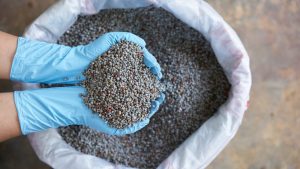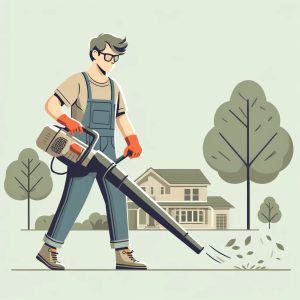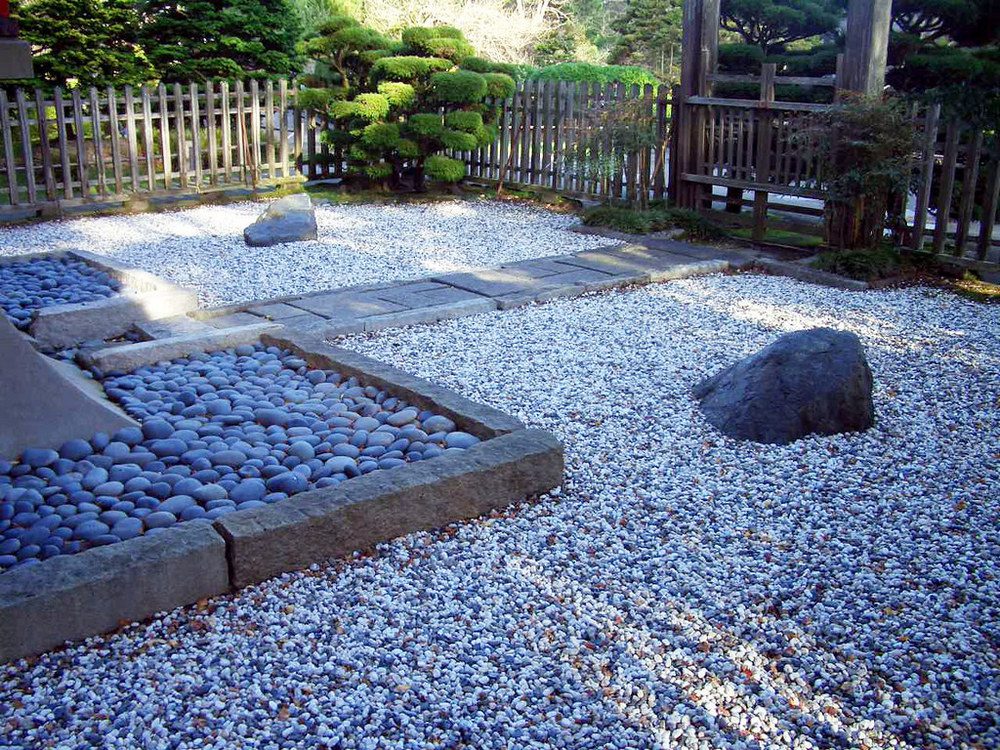
Landscaping rocks can transform any outdoor space. They add texture, contrast, and structure to gardens and yards. With a variety of types available, each offers unique benefits and uses. This guide dives into the diverse world of landscaping rocks, helping you choose the right type for your project.
Understanding Landscaping Rocks
Contents
- 1 Understanding Landscaping Rocks
- 2 Main Types of Landscaping Rocks
- 3 Choosing the Right Rocks for Your Space
- 3.1 Assessing Your Landscape’s Needs
- 3.2 Understanding Color and Texture Harmony
- 3.3 Sizing Rocks to Fit Your Garden Space
- 3.4 Balancing Aesthetics and Functionality
- 3.5 Considering Maintenance and Durability Requirements
- 3.6 Selecting Rocks to Complement Your Plants
- 3.7 Weather and Climate Considerations
- 3.8 Budgeting for Your Landscaping Rocks
- 4 Functional Uses of Landscaping Rocks
- 4.1 Creating Pathways and Walkways
- 4.2 Enhancing Drainage and Preventing Erosion
- 4.3 Providing Weed Control and Ground Cover
- 4.4 Supporting Plants and Trees
- 4.5 Designing Rock Gardens and Features
- 4.6 Using Rocks in Water Features
- 4.7 Mulching with Rocks for Soil Health
- 4.8 Rocks as Natural Outdoor Seating and Borders
- 5 Maintenance and Longevity
- 6 Conclusion
Landscaping rocks are more than just stones in a garden; they’re pivotal in crafting an aesthetic and functional outdoor space. They are the backbone of garden design, laying the groundwork for a dynamic landscape. These rocks bring a natural and enduring element to gardens with their varied shapes, colors, and textures. They can also highlight plants, outline pathways, and create natural-looking barriers.
The use of landscaping rocks is steeped in practicality as well. They are durable and can withstand weather conditions, making them a long-term addition to any yard. Unlike organic mulches, rocks don’t need to be replaced yearly. It makes them a cost-effective solution over time. They also aid in soil moisture retention and help keep weeds at bay, reducing garden maintenance.
The versatility of landscaping rocks is vast. They can be used in xeriscaping, a landscaping method that reduces the need for irrigation. This method is beneficial in areas prone to drought. Rocks also contribute to the ecological balance by providing a habitat for beneficial insects and other wildlife.
Incorporating landscaping rocks into a garden plan can add both beauty and functionality. As we explore the various types and their specific uses, they are indispensable for any gardener looking to create a resilient and captivating outdoor space.
Main Types of Landscaping Rocks
Landscaping rocks come in various types, each with unique characteristics and uses. Homeowners can choose from small, polished pebbles to large, rugged boulders. Selecting the right type can significantly affect the landscape’s appearance and functionality. Here’s a look at the different landscaping rocks available to enhance any outdoor setting.
Pebbles and River Rocks
Pebbles and river rocks are natural choices for creating serene and attractive landscaping features. They come from river beds and beaches, rounded and smoothed by natural water erosion.
Their sizes vary from as small as a pea to as large as a baseball. Gardeners often use them in dry riverbeds, which mimic water flow through a landscape and can serve as a striking focal point. Many of these are sold in stores, such as the polished red pebbles.
River rocks are also popular in water features like fountains and ponds, where their polished surfaces complement the movement and reflection of water. These rocks work well as mulch in garden beds, providing a clean, neat appearance that lasts years without fading.
Gravel and Crushed Stone
Gravel and crushed stone are among the most versatile landscaping materials. Gravel typically comes in small-sized pieces and offers a more rustic look. It’s excellent for creating walkways, filling spaces between flagstones, or providing drainage in flower beds.
Crushed stone is made by mechanically breaking down rocks into smaller pieces. It’s commonly used for driveways and as a base material for concrete pavers.
Gravel and crushed stone come in various colors and sizes, allowing for customization according to the landscape’s design theme. They also prevent soil erosion and suppress weeds when used as ground cover.
Lava Rocks
Lava rocks, known for their distinctive porous texture and deep red hue, are a unique type of landscaping rock. They are formed from cooled volcanic lava and are lightweight compared to other rocks, making them easy to spread and handle. Their porous nature benefits soil aeration and moisture retention, which helps root systems thrive.
These rocks are often used in fire pits and as a mulch substitute in garden beds, where their bold color stands out against green foliage and bright flowers. Lava rocks are also excellent for barbecue grills due to their heat retention properties.
Flagstone and Slate
Flagstone and slate are flat stones ideal for creating natural-looking walkways, patios, and stepping stones. They can be laid down in various patterns, each piece fitting together like a puzzle, giving outdoor spaces a unique and organic feel.
The natural layers of slate make it possible to split into thin sheets, which is why it’s a popular choice for outdoor tile work. Both flagstone and slate are durable, able to withstand heavy foot traffic, and come in a range of earth-toned colors from grays and browns to blues and greens. Their flat surfaces also prevent tripping hazards, making them as practical as attractive.
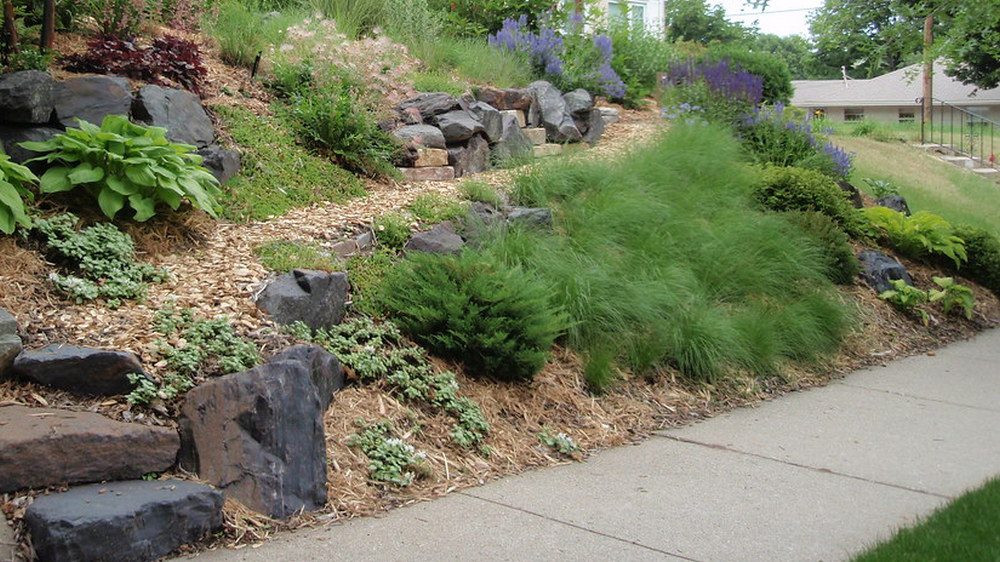
Boulders
Boulders are the titans of landscaping rocks, bringing a sense of scale and permanence to garden designs. These large rocks can anchor a space, serve as natural seating, or even become the centerpiece of a rock garden.
Due to their size and weight, placing boulders requires careful planning and often machinery, but once set, they are maintenance-free. Their variety in shape, color, and texture allows them to fit into many landscapes, from modern to rustic. Boulders also pair well with plants that soften their heavy appearance and can be used to create natural barriers in larger gardens.
Decomposed Granite
Decomposed granite is a finer rock that has a sand-like texture. It’s created naturally as granite breaks down over time into small pieces and gravel-sized particles. This rock is often used for pathways and patios, as it provides a stable and compact surface when pressed down, which is still permeable to water.
This landscape rock offers a rustic, natural look that blends well with outdoor landscapes. Decomposed granite also comes in various colors, from gold to brown to red, complementing design aesthetics. It’s also commonly used around trees and in flower beds, where mineral content can contribute to soil health.
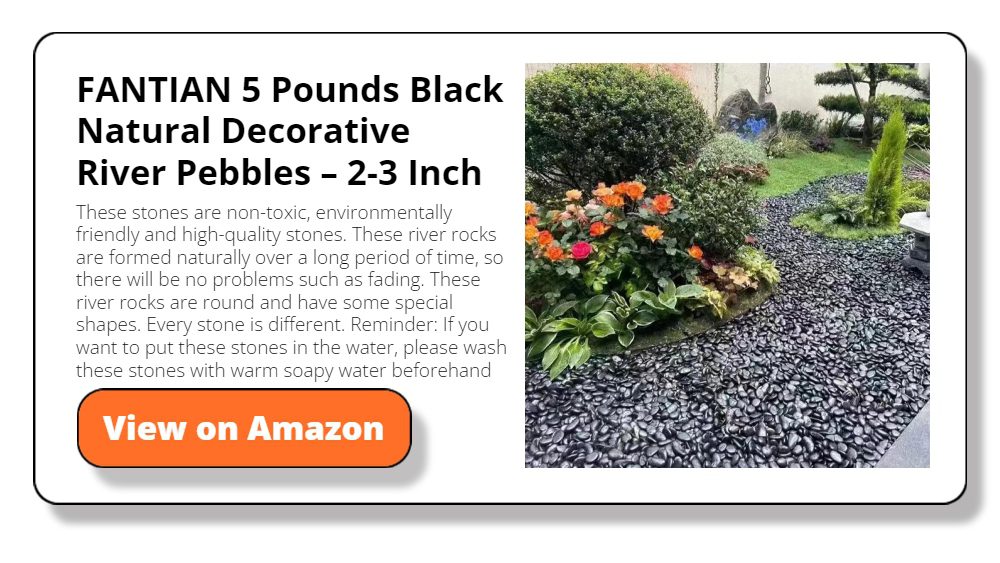
Marble Chips
Marble chips are a refined and decorative landscaping rock choice. They are small, crushed pieces of bright white marble that can bring light and contrast to any garden setting.
Their polished surface reflects sunlight, brightening shaded areas and adding visual interest. Gardeners often use marble chips around shrubs and trees or as a border for flower beds and pathways, where they can accentuate the colors of plants and flowers.
This landscape rock does not alter soil pH, making it safe for use around various plants. Additionally, their durability means they maintain their pristine appearance for many years.
Tumbled Glass
Tumbled glass rocks are a modern and eco-friendly landscaping option. These recycled glass pieces are tumbled until they have smooth edges, making them safe to handle and walk on.
They come in various colors, offering a creative and vibrant choice for gardeners looking to add a splash of color to their outdoor spaces. Tumbled glass is often used in potted plants, as mulch in garden beds, or outdoor mosaic features.
It can also be a striking alternative to traditional water features, capturing and reflecting light uniquely. This type of landscaping rock is a testament to the beauty of recycling and can play a role in sustainable garden practices.
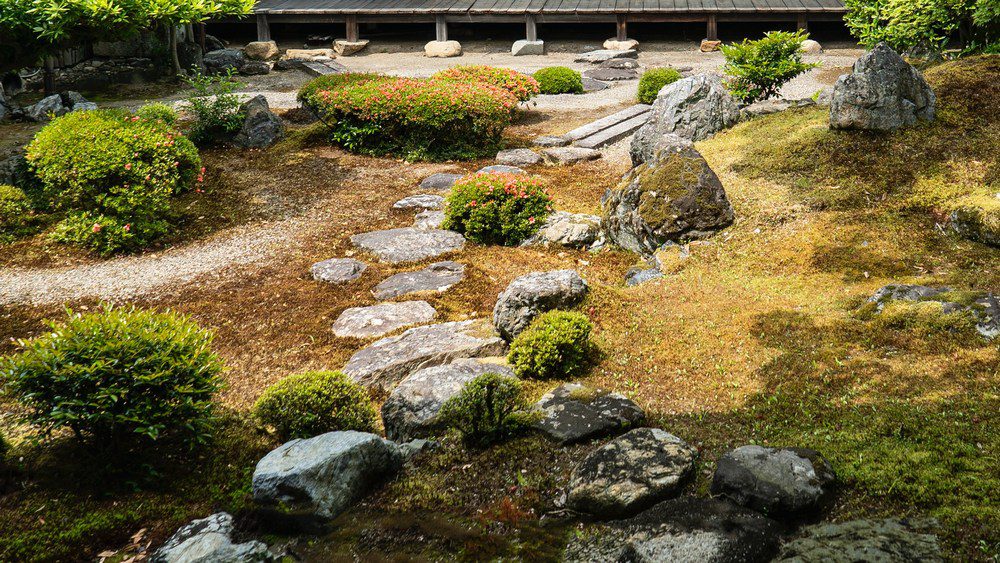
Choosing the Right Rocks for Your Space
Selecting the perfect landscaping rocks for your space is critical in garden design. The right choice can enhance your home’s curb appeal and ensure the longevity and sustainability of your landscape. Factors such as the local climate, the existing style of your home, and the level of maintenance you’re willing to undertake all play a role.
Here, we will break down the key considerations to help you choose landscaping rocks that look great and serve the intended purpose effectively.
Assessing Your Landscape’s Needs
To start, evaluate your landscape’s requirements. Think about what you want to achieve. Are you looking for a drought-tolerant garden, or do you need rocks to build a pathway? Maybe you need to prevent erosion on a slope.
Each scenario will call for different types of rocks. For example, larger rocks like boulders can help with erosion control, while smaller pebbles are better suited for pathways. Consider the practicality of rock types for your specific conditions. This assessment will steer you toward beautiful and functional rocks in your unique space.
Assessment is always a good practice to avoid any landscaping mistakes that will leave you with a lighter wallet and mismatched outdoor aesthetics. Never skip this step when choosing the right rocks.
Understanding Color and Texture Harmony
The colors and textures of the rocks you choose can greatly impact the overall look of your landscape. Colors should complement your home and the plants in your garden. Neutral colors like gray or brown can blend with most settings, while bolder colors like red lava rocks can create a focal point.
Texture also plays a role in the feel of your garden. Smooth river rocks evoke a calm, serene atmosphere, whereas rough, jagged rocks might lend a rugged, natural look. Strike a balance that reflects your style and complements your home’s exterior.
Sizing Rocks to Fit Your Garden Space
Choosing the right size of rocks is vital for the scale and harmony of your landscape. Large boulders can overpower small spaces, while tiny pebbles might get lost in a vast garden. Use large rocks sparingly as focal points or to create natural seating areas. Smaller stones work well for filling in gaps and lining pathways.
A single boulder can be a striking centerpiece in a smaller garden, whereas multiple smaller stones can create patterns or lead the eye through the space. Always measure your area before purchasing to ensure the rocks fit as intended.
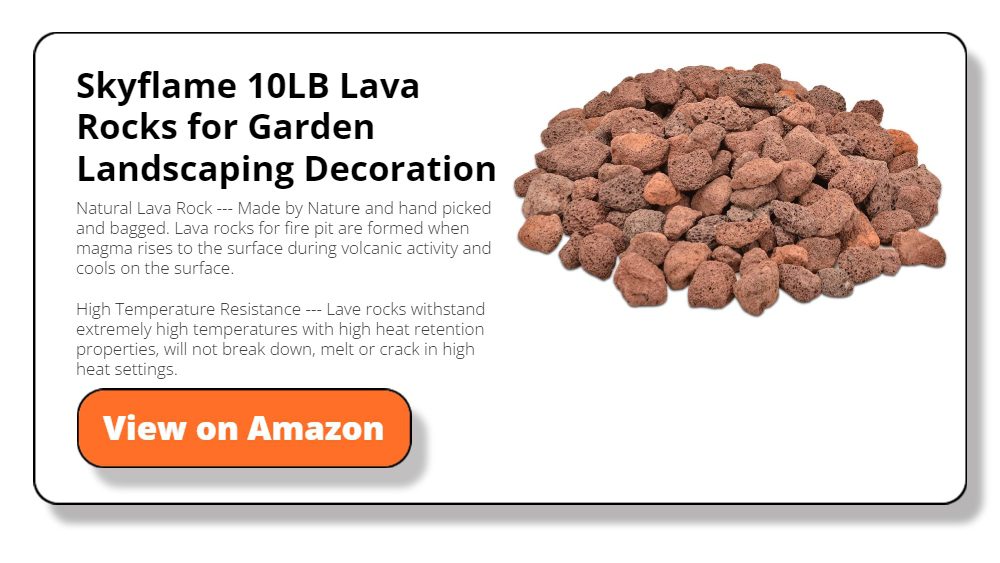
Balancing Aesthetics and Functionality
Your landscape’s beauty is important, but so is its functionality. Landscaping rocks should serve a purpose, whether it’s for walking, drainage, or support. For instance, smooth, flat stones like flagstone make for comfortable walking paths, while porous rocks like lava rocks are good for drainage areas.
Decorative rocks like marble chips can brighten a shade garden and reflect light. Consider the longevity and how the rocks will interact with the rest of your landscape elements, including outdoor furniture, to balance form and function.
Considering Maintenance and Durability Requirements
Maintenance is a key aspect when choosing landscaping rocks. Some rocks, like pebbles and river rocks, stay clean with occasional rinsing. Others, like marble chips, may require more frequent cleaning to maintain their bright appearance.
Durability is also crucial; softer rocks might erode or break down over time. Consider local weather conditions—freeze-thaw cycles can crack some rocks, while intense heat can make others lose color. Opt for rocks that maintain integrity with minimal upkeep to ensure a lasting investment in your landscape.
Selecting Rocks to Complement Your Plants
The right rocks can elevate the look of your plantings. When choosing rocks, consider the colors and textures of your existing plants. Darker rocks can make greenery pop, while lighter tones can provide contrast to darker foliage.
Also, think about the water and soil needs of your plants. For example, succulents pair well with gravel, facilitating drainage, while moisture-loving plants might benefit from rocks retaining moisture. Choose rocks that will create a harmonious environment for your plants to thrive and complement their natural beauty.
Weather and Climate Considerations
The local weather and climate can greatly influence your choice of landscaping rocks. In areas with heavy rain, you’ll need rocks that allow for good drainage to prevent waterlogging. In contrast, arid regions benefit from rocks like lava stones that retain moisture.
In addition, consider the temperature fluctuations—some rocks may expand or contract with temperature changes, which can lead to cracking. Frost-resistant rocks are ideal in colder climates. Always choose rocks that can withstand your area’s weather patterns to ensure they last and continue to look good year-round.
Budgeting for Your Landscaping Rocks
Cost is an important factor when selecting landscaping rocks. Prices can vary widely based on the type of rock, size, and transportation costs. Set a budget before you start shopping and consider long-term expenses; cheaper rocks might need to be replaced more frequently, while more expensive options could be a one-time investment.
Moreover, factor in the quantity needed—buying in bulk can often reduce the price. Plan your budget to accommodate not just the purchase but also the delivery and installation of your chosen rocks if you’re not installing them yourself.

Functional Uses of Landscaping Rocks
Landscaping rocks aren’t just pleasing to the eye; they serve many practical purposes in any outdoor space. From defining pathways that guide you through a garden to preventing erosion on a sloped property, these natural elements are as functional as they are decorative.
In this section, we look into the various roles that landscaping rocks can play in enhancing the utility and sustainability of your garden.
Creating Pathways and Walkways
Landscaping rocks are ideal for crafting paths and walkways, guiding movement, and adding charm to outdoor spaces. Rocks like flagstone or slate offer flat, stable surfaces perfect for foot traffic, creating an inviting path that integrates seamlessly with the surrounding landscape.
Pea gravel or decomposed granite can fill gaps, providing a pleasing crunch underfoot and a smooth surface. Designing a pathway with rocks can also direct attention to special garden areas while ensuring a safe, durable walking area that withstands the elements.
Enhancing Drainage and Preventing Erosion
Proper drainage is crucial in a landscape to prevent water accumulation and soil erosion. Rocks like river rocks, with their smooth and varied sizes, are excellent for creating dry creek beds that channel water away from areas prone to erosion.
Lava rocks are porous, allowing water to filter down and prevent runoff. Using rocks strategically solves drainage issues and adds an aesthetic element miming a natural stream or riverbed, enhancing the garden’s overall design.
Providing Weed Control and Ground Cover
Landscaping rocks can be a powerful ally in the fight against weeds. When used as ground cover, rocks like marble chips or pea gravel cover the soil, making it harder for unwanted plants to take root. This rock layer also helps keep the ground cool and moist, benefiting many plants.
Additionally, the weight of the rocks can prevent soil from being blown or washed away, preserving the integrity of garden beds. Using rocks as ground cover aesthetically provides a clean, low-maintenance surface that complements the rest of the landscape.
Supporting Plants and Trees
Rocks are more than just decorative; they can also support and benefit plants and trees. Larger rocks, when placed at the base of plants, can protect the soil from erosion and help retain moisture.
In colder climates, rocks absorb heat during the day and radiate it at night, creating a microclimate that can protect delicate plants from frost. Furthermore, certain rocks, like limestone, can alter the soil’s pH, benefiting plants that prefer alkaline conditions. Choosing the right rocks to support your plants can lead to a healthier and more robust garden.

Designing Rock Gardens and Features
Rock gardens are an artistic way to transform your landscape into a tapestry of textures and colors. By carefully selecting and placing rocks, you can create a feature that is both a visual and functional focal point.
From Zen gardens that provide a meditative space to rugged alpine landscapes, the possibilities are endless. The key is to choose rocks that mimic a natural setting and to arrange them in a way that looks accidental yet balanced. It might involve grouping boulders or creating a cascade of stones to simulate a mountainous terrain, all designed to make a striking statement in your garden.
Using Rocks in Water Features
Incorporating rocks into water features can create a tranquil and natural-looking setting. Smooth river rocks can line the bottom of a pond or stream, providing a surface for beneficial bacteria and blending the edges into the landscape. Water-loving plants can root in larger stones placed at the water’s edge.
For dynamic water features, like waterfalls or fountains, rocks can direct the flow, creating pleasing sounds and movement. Lava rocks, in particular, are useful in filtration systems due to their porous nature. The combination of rocks and water not only adds to the aesthetics of a garden but also supports a healthy aquatic ecosystem.
Mulching with Rocks for Soil Health
Rocks can serve as an effective mulching material to enhance soil health. Unlike organic mulches, rocks don’t decompose, so they don’t need to be replaced regularly. They’re particularly effective in retaining soil moisture and reducing water evaporation.
When used around plants, they help maintain consistent soil temperatures, protecting roots from extreme heat and cold. Rocks like pea gravel or small river stones allow water to penetrate while keeping the soil in place, which is particularly beneficial in preventing soil erosion on slopes.
Rocks as Natural Outdoor Seating and Borders
Landscaping rocks can be strategically placed to create natural seating areas in your garden. Large, flat boulders provide a sturdy and weather-resistant resting place. In addition to seating, rocks can create distinct borders between different areas in your garden.
They define spaces visually and can serve as a barrier to grass and weeds. Whether you’re using them to edge a flowerbed, delineate a vegetable garden, or highlight the boundary of a walking path, rocks are a durable and attractive choice to structure your outdoor space.
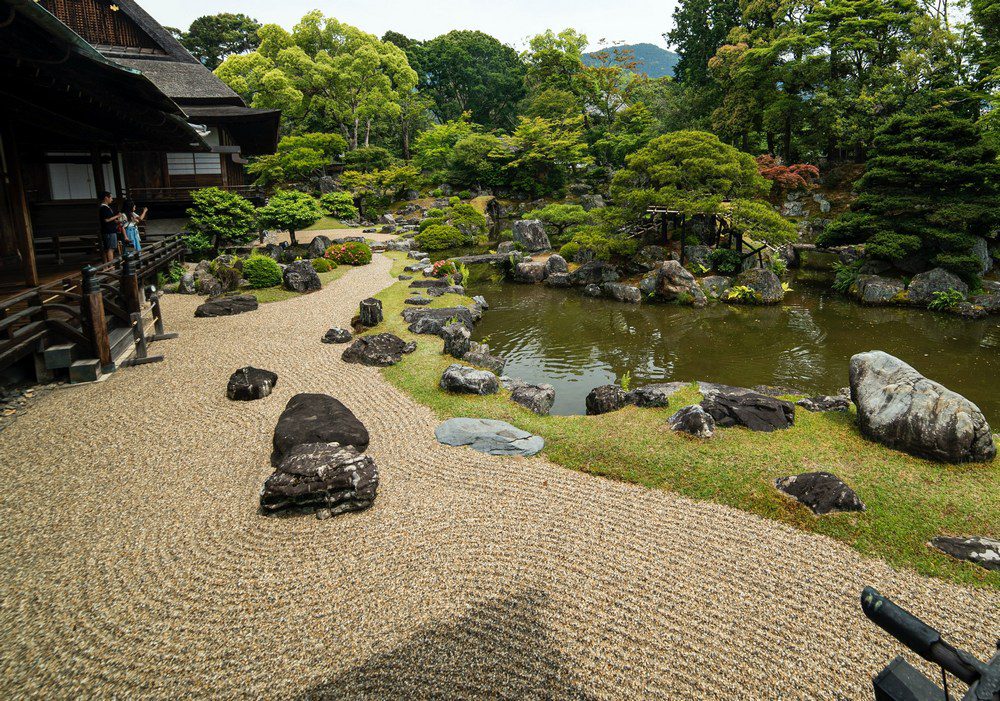
Maintenance and Longevity
Maintaining your landscaping rocks is key to preserving the beauty and functionality of your outdoor space. Over time, rocks can gather dust, leaves, and debris or shift from their original placement. A well-planned maintenance routine will keep your rocks looking as good as new and ensure longevity.
We will explore simple yet effective practices for caring for your landscaping rocks and tips for ensuring they continue to serve their purpose for years to come.
Routine Cleaning and Debris Removal
Keeping landscaping rocks clean is essential for maintaining their appearance. Regularly remove leaves and debris by hand or with a leaf blower. Washing rocks with a hose can dislodge dirt, and a mild detergent and a stiff brush can be used for a deeper clean. It’s important to allow rocks to dry completely to prevent moss and algae growth.
Preventing Weed Growth Among Rocks
Weed barrier fabrics can be placed beneath rocks to prevent weeds from sprouting. If weeds do appear, they can often be pulled out by hand or treated with a post-emergent herbicide. Regular monitoring and quick action when weeds are spotted will keep your rock areas looking pristine.
Stabilizing Rocks to Prevent Shifting
Over time, rocks may shift due to weather or foot traffic. To prevent this, ensure that the base and edges are well-defined and may include edging materials. Larger rocks can be set into the ground for stability, and a good foundation layer beneath smaller rocks can keep them in place.
Seasonal Care for Landscaping Rocks
Different seasons require different care. In spring, clear any debris accumulated over winter. In summer, ensure rocks are not displaced due to heavy rains. Fall is a good time to check for and remove any weeds, and in winter, ensure rocks aren’t cracked by freeze-thaw cycles.
Addressing Algae and Moss on Wet Rocks
Algae and moss can thrive on rocks in damp conditions. To combat this, increase sunlight exposure by trimming overhanging plants and ensuring good air circulation. Algae and moss can be scrubbed off, and preventive products can be applied to the rocks.
Refreshing the Appearance of Faded Rocks
Sun and elements can cause rocks to lose their color. To refresh them, a rock color enhancer can be applied. It’s a temporary solution, but it can bring out the original vibrancy of the rocks. Ensure the product is environmentally friendly, especially if used near water features.
Repair and Replacement Strategies
Inspect your rocks regularly for signs of wear or damage. Smaller rocks that are broken or too worn down should be replaced. For larger features like boulders, professional assessment may be necessary to determine if they can be repaired or need to be replaced.
Conclusion
Landscaping rocks are a versatile and durable element that can enhance the beauty and functionality of your outdoor space. Whether designing a rock garden, building a water feature, or simply using rocks for mulching, the right selection and placement can create stunning visual appeal and practical benefits.
With the appropriate maintenance and care, your landscaping rocks can stand the test of time, providing enduring beauty and structure to your garden. Embrace the natural elegance that rocks bring to the landscape, and watch as your garden evolves into a work of art with each passing season.

